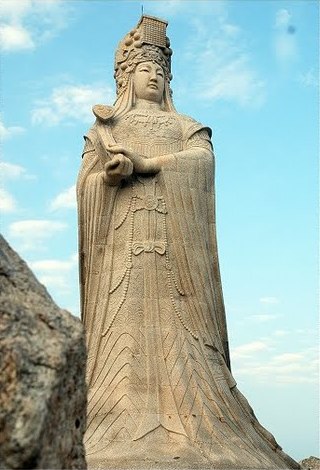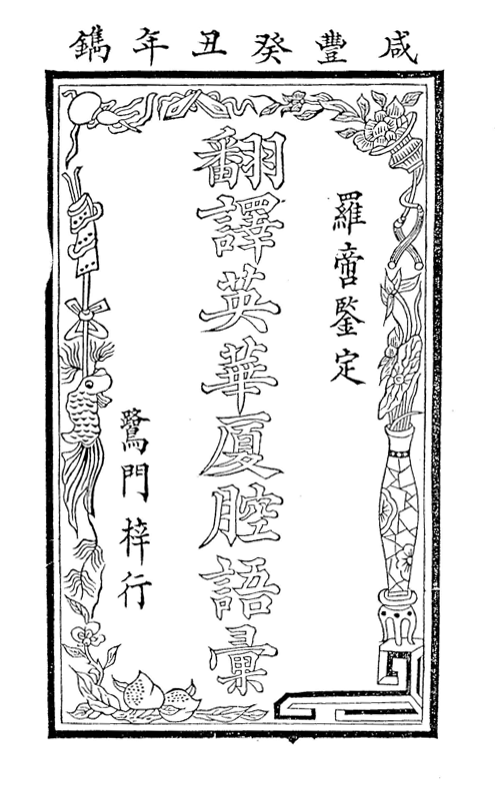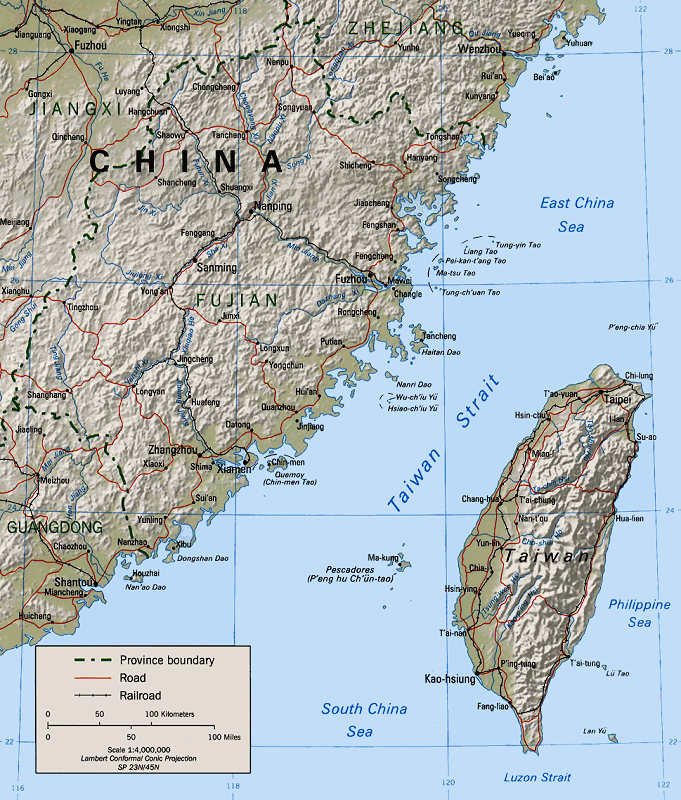|
Nangang District (Taipei)
Nangang, United States National Geospatial-Intelligence Agency District (), also Nankang, is a southeastern district of Taipei, Taiwan. It is the seat of the Academia Sinica, Taipei World Trade Center Nangang Exhibition Hall, Nankang Software Park (NKSP), and Mitsui Shopping Park LaLaport Taipei Nangang. History Nangang was settled in 1735 by Fujianese, especially in the present villages of Nangang, Sanchong, and Dongxin. The placename was ' (), Nangang-Sanchong Port (). The Qing era name of Lamkang'a (), refers to its position on Keelung River. In 1920, during the Japanese era, Nangang was part of , , Taihoku Prefecture. In December 1945, after the handover of Taiwan to the Kuomintang, the administrative levels were changed to Neihu Township (), Qixing District (), Taipei County. July 6 the following year, as proposed by Mayor Que Shankeng (), Nangang was separated into its own township (). In 1968, it became a district of Taipei. Administration Government instit ... [...More Info...] [...Related Items...] OR: [Wikipedia] [Google] [Baidu] |
District (Taiwan)
Districts are administrative subdivisions of Taiwan's Special municipality (Taiwan), special municipalities of the second level and Provincial city (Taiwan), provincial cities of the third level formerly under its provinces. There are two types of district in the administrative scheme: Ordinary districts are governed directly by the municipality/city government, with district administrators appointed by mayors to four-year terms. The mountain indigenous district is a local government body with elected district chiefs as well as district council serving four-year terms. History The first administrative divisions entitled "districts" were established in the 1900s, when Taiwan was Taiwan under Japanese rule, under Japanese rule. After World War II, nine out of eleven Cities of Japan, prefectural cities established by the Japanese government were reformed into provincial cities. These were Changhua, Chiayi, Hsinchu, Kaohsiung, Keelung, Pingtung City, Pingtung, Taichung, Tainan ... [...More Info...] [...Related Items...] OR: [Wikipedia] [Google] [Baidu] |
Taihoku Prefecture
Taihoku Prefecture (臺北州; ''Taihoku-shū'') was an administrative division of Taiwan created in 1920, during Japanese rule. The prefecture consisted of modern-day Keelung, New Taipei City, Taipei and Yilan County. Its government office, which is now occupied by the Control Yuan of Taiwan, was in Taihoku City (modern-day Taipei). Population Population statistics of permanent residents in Taihoku Prefecture in 1941: Administrative divisions Cities and districts There were 3 cities and 9 districts under Taihoku Prefecture. All of the cities (市 ''shi'') name in Chinese characters is carried from Japanese to Chinese. Towns and villages Buildings and establishments Hospitals *Taihoku Imperial University Hospital (臺北帝國大學醫學部附屬病院) *Japanese Red Cross Society Taiwan Branch Hospital (赤十字社臺灣支部病院) *Government-General of Taiwan Monopoly Bureau Mutual Aid Association Hospital (臺灣総督府専売局共済組合病院) *Go ... [...More Info...] [...Related Items...] OR: [Wikipedia] [Google] [Baidu] |
Matsu (goddess)
Mazu or Matsu is a sea goddess in Chinese folk religion, Chinese Buddhism, Confucianism, and Taoism. She is also known by several other names and titles. Mazu is the deified form of Lin Moniang (), a shamaness from Fujian who is said to have lived in the late 10th century. After her death, she became revered as a tutelary deity of Chinese seafarers, including fishermen and sailors. Her worship spread throughout China's coastal regions and overseas Chinese communities throughout Southeast Asia, where some Mazuist temples are affiliated with famous Taiwanese temples. Mazu was traditionally thought to roam the seas, protecting her believers through miraculous interventions. She is now generally regarded by her believers as a powerful and benevolent Queen of Heaven. Mazu worship is popular in Taiwan because many early Chinese settlers in Taiwan were Hoklo people from Fujian. Her temple festival is a major event in Taiwan, with the largest celebrations occurring in and a ... [...More Info...] [...Related Items...] OR: [Wikipedia] [Google] [Baidu] |
National Biotechnology Research Park
The National Biotechnology Research Park () is an industrial park in Nangang District, Taipei, Taiwan. History The area where the industrial park stands today used to be the site for the 202nd arsenal of Ministry of National Defense. Later on, the area was decided to be redeveloped into an industrial park during the presidency of Chen Shui-bian. The construction project was launched in 2007. Hampered by several controversies, the construction finally began in 2014. The industrial park was developed with a budget of NT$22.5 billion and construction of was completed on 14 March 2018. The industrial park was inaugurated on 15 October 2018 by President Tsai Ing-wen. Tenants * Biomedical Translation Research Center, Academia Sinica * Development Center for Biotechnology * Food and Drug Administration * National Laboratory Animal Center Transportation The industrial park is accessible from Nangang Station of Taipei Metro. See also * National Science and Technology Council (Taiwan) ... [...More Info...] [...Related Items...] OR: [Wikipedia] [Google] [Baidu] |
China University Of Science And Technology
China, officially the People's Republic of China (PRC), is a country in East Asia. With population of China, a population exceeding 1.4 billion, it is the list of countries by population (United Nations), second-most populous country after India, representing 17.4% of the world population. China spans the equivalent of five time zones and Borders of China, borders fourteen countries by land across an area of nearly , making it the list of countries and dependencies by area, third-largest country by land area. The country is divided into 33 Province-level divisions of China, province-level divisions: 22 provinces of China, provinces, 5 autonomous regions of China, autonomous regions, 4 direct-administered municipalities of China, municipalities, and 2 semi-autonomous special administrative regions. Beijing is the country's capital, while Shanghai is List of cities in China by population, its most populous city by urban area and largest financial center. Considered one of six ... [...More Info...] [...Related Items...] OR: [Wikipedia] [Google] [Baidu] |
Institute Of Economics, Academia Sinica
An institute is an organizational body created for a certain purpose. They are often research organisations (research institutes) created to do research on specific topics, or can also be a professional body. In some countries, institutes can be part of a university or other institutions of higher education, either as a group of departments or an autonomous educational institution without a traditional university status such as a "university institute", or institute of technology. In some countries, such as South Korea and India, private schools are sometimes referred to as institutes; also, in Spain, secondary schools are referred to as institutes. Historically, in some countries, institutes were educational units imparting vocational training and often incorporating libraries, also known as mechanics' institutes. The word "institute" comes from the Latin word ''institutum'' ("facility" or "habit"), in turn derived from ''instituere'' ("build", "create", "raise" or "educat ... [...More Info...] [...Related Items...] OR: [Wikipedia] [Google] [Baidu] |
Food And Drug Administration (Taiwan)
The Food and Drug Administration (FDA; ) is an agency of the Ministry of Health and Welfare of Taiwan Taiwan, officially the Republic of China (ROC), is a country in East Asia. The main geography of Taiwan, island of Taiwan, also known as ''Formosa'', lies between the East China Sea, East and South China Seas in the northwestern Pacific Ocea ..., which is responsible for the safety and quality of food, drug, medical service and cosmetics. FDA is a regulatory member of ICH association. History On 3 June 2009, the Food and Drug Administration Organization Act was promulgated. On 1 January 2010, Bureau of Food Safety, Bureau of Pharmaceutical Affairs, Bureau of Food and Drug Analysis and Bureau of Controlled Drugs were merged to form the Food and Drug Administration. On 23 July 2013, the agency was placed under the Ministry of Health and Welfare. Organizational structures Operational divisions * Planning and research development * Food safety * Medicinal products * Medic ... [...More Info...] [...Related Items...] OR: [Wikipedia] [Google] [Baidu] |
Village (Taiwan)
Villages are the basic level administrative subdivisions of the Taiwan, Republic of China, under Township (Taiwan), townships, County-administered city, county-administered cities or District (Taiwan), districts. There are two types of villages depending on the divisions it belongs to. Structuring and sizing The history of villages in Taiwan could date back to the Hoko system Taiwan under Japanese rule, in the Japanese era, which ''ho'' () changed into village after the Republic of China (1912–1949), Republic of China Retrocession of Taiwan, took control of Taiwan. The formation of a village helps divide areas into considerations for transportation and city planning. The formation of the village and its size depend largely on the county it is located in or the population nature of the local area. In counties or districts with a limited population, 100 households could form a village, whereas in densely populated New Taipei, 1,000 households are necessary to form a village. In v ... [...More Info...] [...Related Items...] OR: [Wikipedia] [Google] [Baidu] |
Pe̍h-ōe-jī
( ; , , ; POJ), also known as Church Romanization, is an orthography used to write variants of Hokkien Southern Min, particularly Taiwanese Hokkien, Taiwanese and Amoy dialect, Amoy Hokkien, and it is widely employed as one of the writing systems for Southern Min. During its peak, it had hundreds of thousands of readers. Developed by Western missionary, missionaries working among the Chinese emigration, Chinese diaspora in Southeast Asia in the 19th century and refined by missionaries working in Xiamen and Tainan, it uses a modified Latin alphabet and some diacritics to represent the spoken language. After initial success in Fujian, POJ became most widespread in Taiwan and, in the mid-20th century, there were over 100,000 people literate in POJ. A large amount of printed material, religious and secular, has been produced in the script, including Taiwan's first newspaper, the ''Taiwan Church News''. During Taiwan under Japanese rule, Japanese rule (1895–1945), the use of was ... [...More Info...] [...Related Items...] OR: [Wikipedia] [Google] [Baidu] |
Wade–Giles
Wade–Giles ( ) is a romanization system for Mandarin Chinese. It developed from the system produced by Thomas Francis Wade during the mid-19th century, and was given completed form with Herbert Giles's '' A Chinese–English Dictionary'' (1892). The romanization systems in common use until the late 19th century were based on the Nanjing dialect, but Wade–Giles was based on the Beijing dialect and was the system of transcription familiar in the English-speaking world for most of the 20th century. Both of these kinds of transcription were used in postal romanizations (romanized place-names standardized for postal uses). In mainland China, Wade–Giles has been mostly replaced by Hanyu Pinyin, which was officially adopted in 1958, with exceptions for the romanized forms of some of the most commonly used names of locations and persons, and other proper nouns. The romanized name for most locations, persons and other proper nouns in Taiwan is based on the Wade–Giles der ... [...More Info...] [...Related Items...] OR: [Wikipedia] [Google] [Baidu] |
Hanyu Pinyin
Hanyu Pinyin, or simply pinyin, officially the Chinese Phonetic Alphabet, is the most common romanization system for Standard Chinese. ''Hanyu'' () literally means ' Han language'—that is, the Chinese language—while ''pinyin'' literally means 'spelled sounds'. Pinyin is the official romanization system used in China, Singapore, Taiwan, and by the United Nations. Its use has become common when transliterating Standard Chinese mostly regardless of region, though it is less ubiquitous in Taiwan. It is used to teach Standard Chinese, normally written with Chinese characters, to students in mainland China and Singapore. Pinyin is also used by various input methods on computers and to categorize entries in some Chinese dictionaries. In pinyin, each Chinese syllable is spelled in terms of an optional initial and a final, each of which is represented by one or more letters. Initials are initial consonants, whereas finals are all possible combinations of medials ( semivowels co ... [...More Info...] [...Related Items...] OR: [Wikipedia] [Google] [Baidu] |






